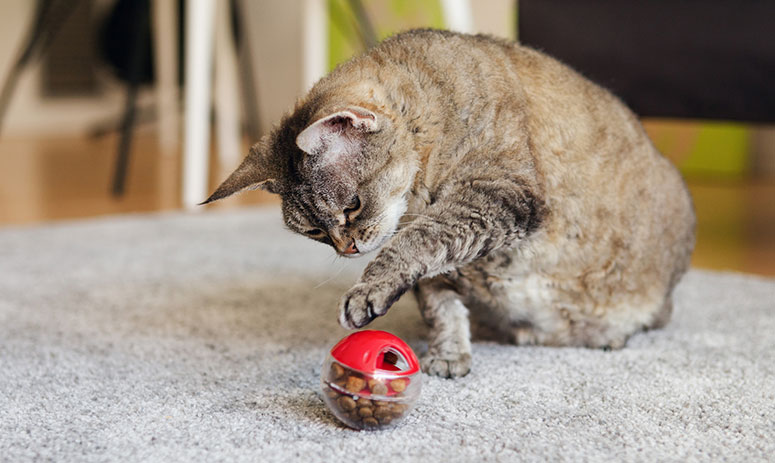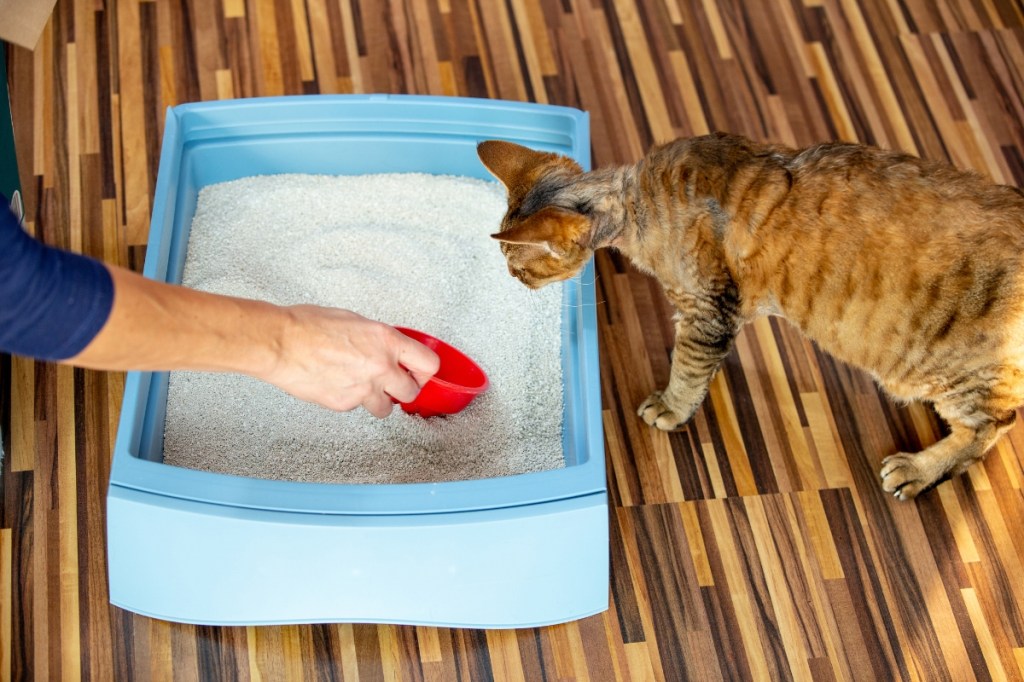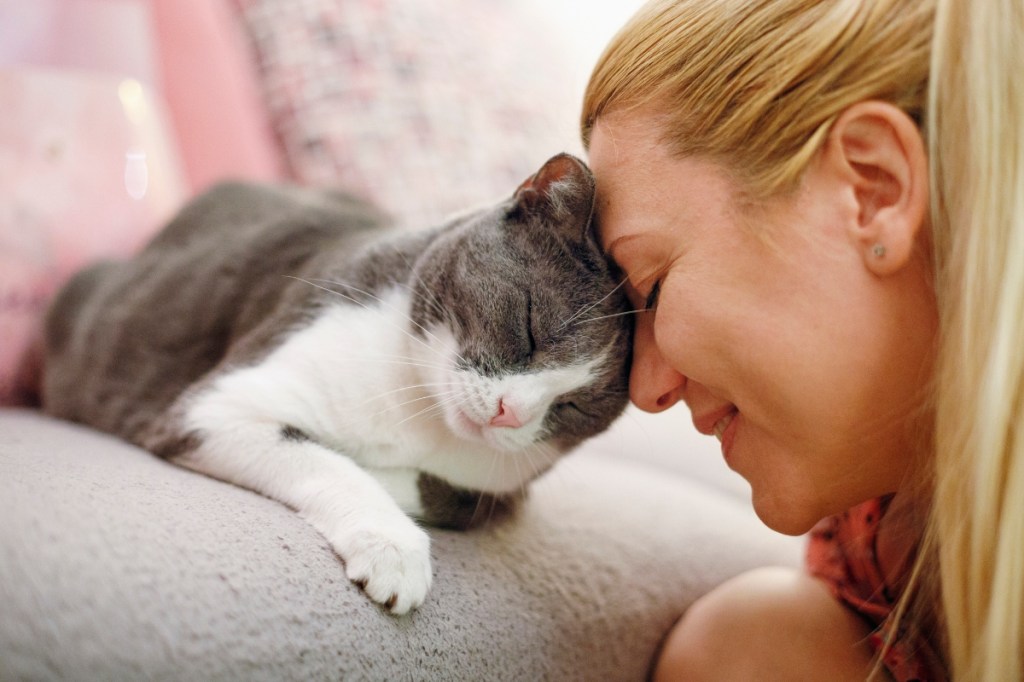Key Takeaways
- Cats possess a variety of forms of intelligence, which they have developed over millenia, allowing them to survive in many environments.
- It’s only been in recent years that scientists have tried to understand how a cat’s brain works.
- Cats have shown problem-solving skills, emotional intelligence, a sense of time, and the ability to remember, all signs of their cleverness.
Table of Contents
Cats, with their mysterious aura, have captivated humans for millennia. Their enigmatic personalities, resourcefulness and complex behaviors have often led us to wonder about the inner workings of their minds. Recent scientific research has shed some light on how cats’ brains operate, revealing fascinating insights into their cognitive abilities, emotional lives, and sensory perceptions.
How smart are cats?
In a word – smart! If you are a cat parent, you’ve probably seen your cat retrieve a hidden toy, meow at you to be let out, or strategically knock that one glass family heirloom off a table just to get your attention. These are all signs of intelligence that researchers are just beginning to understand.
Scientists believe cats have some distinctive abilities compared to dogs and other animals, says Bond Vet. Cats excel at learning new information and can mesh that data with things they’ve learned previously, recall it when needed, and apply it to the current situation. One tabby cat even learned to play the piano!
There is no way to test an animal’s Intelligence Quotient (IQ) as we might for people, so scientists look at cognitive abilities or how animals gather information, retain that knowledge, make decisions, and then behave. Cats have survived thousands of years, first in the wild and then domesticated, which shows they are intelligent and adaptable, at least when it comes to surviving as cats. They’ve been able to manipulate their environment to get what they need. Behaviorists believe that dogs’ and cats’ cognitive abilities are similar to those of a human toddler, although they are clever in different ways. Both species look to people for cues, especially in potentially dangerous situations. However, dogs turn to people more often for social cues, while cats look to their owners for cues but try to solve problems on their own. Both traits are signs of intelligence that fit with how each species behaves.
The cat brain structure
According to the experts at Purina, the physical structure of human and cat brains is very similar—about 90 percent alike. Cats have the same lobes in the cerebral cortex (the “seat” of intelligence) as humans, and the region that controls emotion is especially similar.
The brains of cats and humans function the same way, conveying data between different regions via identical neurotransmitters. This information from their five senses allows the cat’s brain to construct a complex perception of the real world and to react to and manipulate its environment. The cat and human brains both have grey and white matter and look similar.
Cats have an estimated 300 million neurons in their cerebral cortex (compared to 21 to 26 billion in humans and 160 million in dogs), responsible for decision-making, memory, problem-solving, and complex thoughts. This indicates a significant capacity for learning.
Ways that cats display intelligence
Cats make decisions
Both humans and cats take in and process data from the five senses and use that information to make decisions. Have you noticed your cat looking back and forth at the door or prowling around for the coziest place to sleep? When your cat is doing that, they are thinking and deciding, just as we do.
Cats form memories
Cats form short- and long-term memories and can recall past information for up to 16 hours. Their short-term memory has been historically crucial to their survival, as they can remember locations abundant with prey, shelter, or danger. In modern times, they use this ability to observe and engage in activities such as ringing a bell, flipping a light switch, or unlocking a door by mimicking their human counterparts. Have you seen your cat scratch at the door, begging to go outside, even if they’ve never gone out before? This indicates your cat has learned the purpose of the door by watching you go in and out.
When a cat repeats an experience enough times, they develop long-term memories. Cats are particularly adept at remembering places and people, with their memories lasting upwards of 10 years. They also can link specific memories of locations or events with the emotions they felt at those moments, whether those emotions are negative, like fear or pain, or positive, such as joy or satisfaction. If your cat glares at you as you pack a suitcase, they may remember that you were gone for a while the last time you did that, and they are not pleased about it.
Cats understand pointing
A 2023 study with dogs and cats found that both species could follow human pointing gestures to find hidden food, although dogs made more successful choices than cats. Older cats performed better than younger ones, perhaps indicating they have learned over time. Cats also did better at home than in a laboratory.
Cats understand the laws of physics
Research published in the journal Animal Cognition indicates that cats understand basic laws of physics, which they use to predict the presence of hidden objects based on sound. This ability suggests a level of cause-and-effect reasoning. Combining these abilities with their keen sense of hearing allows them to predict where possible prey hides. In the study, the Kyoto-based researchers presented 30 domestic cats with containers – some contained an object that made a rattling sound, others did not. After shaking it, the container was turned over, either with an object dropping down or not.
The cats looked longer at the containers that researchers shook with a noise. This helped them predict whether an object would appear (or not) once the container was overturned. They also stared longer at non-rattling containers with an item as if they were surprised. Researchers concluded that when the container rattled the cats expected it to have something inside, meaning they understood a causal-logical connection between a sound and the appearance of an object they couldn’t see.
Cats know where hidden objects are
Studies also show that cats are aware of objects that aren’t directly visible to them. They understand that something out of sight isn’t necessarily gone forever. One older study found that most cats could find a desirable object such as tasty food, after someone had hidden it behind a box. This is why you might see your cat learn to open a cabinet where you keep food or treats.
Cats have feelings too
Despite their reputation for aloofness, cats exhibit a form of emotional intelligence. According to the Animal Journal, cats can form strong bonds with humans and other cats, demonstrating affection and attachment behaviors often associated with more socially complex animals. The study found that cats can read their owner’s moods, such as fear, anger, happiness, and sadness, and adjust their behavior accordingly. Your cat may observe your facial expressions and tone of voice when deciding whether to crawl on your lap or go hide.
Cats use their keen senses
The sensory world of cats is vastly different from humans. Their brains are wired to process information from their highly developed senses, particularly hearing and smell. Cats sense of hearing is even better than dogs and they have one of the broadest hearing ranges among mammals. Their sense of smell is also many times better than humans – they have 200 million odor-sensitive cells, compared to five million in humans. These abilities are linked to their hunting behaviors, allowing them to sniff out prey and detect high-pitched sounds from rodents.
Cats can learn language and voices
According to one study, cats can learn and respond to their names, especially when associated with positive things such as treats or attention. Cats can identify unique vocal cues, so they often respond better to their pet parent than to a stranger. The study of 20 cats played three strangers’ voices, followed by the owner’s voice, who was out of view. The cats responded more strongly to their owner’s voices than the strangers.
Cats have a sense of time
Does your cat use meows and other attention-getting behaviors to get you to feed them at a particular time? This indicates that your kitty understands the concepts of time and cause and effect. Of course, a cat can’t read a clock or watch, but they do have an idea of what time of day it is and how much time has passed, says cats.com.
Cats learn the time of day by observing their pet parents’ routines, daylight and darkness, and their own circadian rhythm. They can also tell the difference between shorter and longer periods.
How to test your cat’s intelligence
While an official IQ test for cats doesn’t exist, you can run an experiment at home to get a feel for how smart your cat might be, said Jennifer Coates, consulting veterinarian for Healthy Paws. Here is her test, originally published at petMD:
- Gather one of your cat’s favorite treats or toys and a cup or small box your cat can’t see through.
- Sit beside your cat and let them see you place the treat or toy under the upside-down cup or box.
- Step back and see what your cat does.
If your cat immediately flips the container to get what they want, you might have a feline genius on your hands. If a kitty takes a while to investigate the situation and then paws around under the container, eventually extracting their treat or toy, your cat is a solid student of the world.
But if your cat looks at you with a confused “I guess that’s gone forever!” look in their eyes and goes about their business, smarts may not be your cat’s strongest quality. Or maybe they just don’t want what you hid from them!
If you want to take your cat’s intelligence testing up a notch, measure how long they can remember that you put an object under the container.
- Follow steps one and two above, but gently hold your cat so they can’t try to uncover their treat or toy.
- Let them go after five seconds. Did they remember it was there?
- Try 15 seconds, then 30 seconds, then a minute.
How to support your cat’s brain health
The best way to keep your cat’s brain healthy is to give them many enrichment activities throughout their life. Toys, a flirt pole, food puzzles, catnip, a kitty condo, or other pieces of furniture to climb on will keep your cat’s brain active and satiated. If you have the space and the means, a catio will allow your cat to experience the outdoors without the danger.
Hill’s Pet Nutrition says foods rich in antioxidants and omega-3 fatty acids help improve your cat’s cognitive function. They suggest incorporating a puzzle ball or maze into feeding time to encourage your cat to hunt and stimulate brain activity.
Of course it’s also important to support your cat’s overall health, so stay on top of your cat’s veterinary care.
Which cat breeds are the smartest?
Some people believe that Bengals, Siamese, and Abyssinians are the smartest cat breeds, but there is no science to back up those claims. Those breeds may be perceived as more intelligent because they are extremely social and happiest when they’re playing and interacting with humans.
Most experts believe that true problem-solving intelligence is based more on the individual cat than it is by breed. Every cat has a unique personality, shaped by both their genetics and life history.
Conclusion
While there’s still much to learn about how cats’ brains work, current research has begun unraveling the mystery of the feline mind. Cats possess a complex blend of cognitive skills, emotional depth, and sensory prowess, making them fascinating to study. As scientists continue to explore the intricacies of their brains, we can hope to deepen our understanding and appreciation of these enigmatic creatures.












